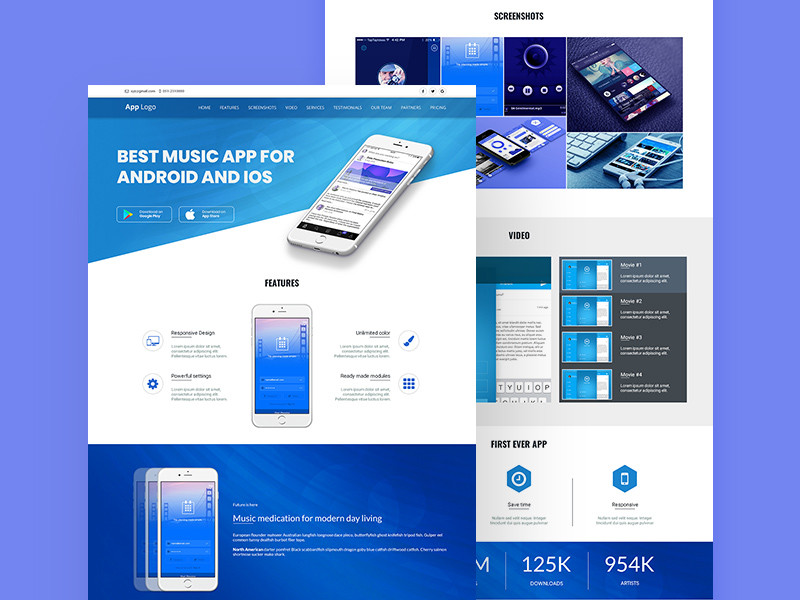
Simply put, a landing page is the page of a website that a person first lands on after clicking an offsite link. When built effectively, landing pages are highly targeted pages aimed at converting a specific group of site visitors into customers.
Why are Landing Pages so Important?
Whether your website’s goal is to sell products, generate leads, generate phone calls, or anything else, using and optimizing landing pages will ultimately lead to higher conversion rates and more business for you. One of the biggest misconceptions about websites is that all of the traffic should be sent to the homepage. Imagine what would happen if all of New York City’s traffic, no matter where each vehicle wanted to go, had to drive through Times Square, the “homepage” of NYC. After seeing the mess, most drivers wouldn’t go at all. Of those who did, the majority would give up before ever reaching their destination. While a ridiculous example, this is no different than traffic coming to your website.
According to HubSpot, 98% of website visitors never come back to a website, so it’s important that each page a visitor sees grabs their attention and offers them compelling content related to what they were looking for.
Why You Need a Landing Page for Your Digital Marketing
The best actions you can get visitors to take are based on what it was that brought them to your site. For example, if the visitor came to your e-commerce site from a Google AdWords ad for a band T-shirt, don’t show them your latest spring dresses. That content is not relevant to them; therefore, you have little chance of getting a conversion.
Using Landing Pages with Paid Search Ads
Landing pages are typically seen as part of a paid search campaign. The reason for this is because they allow marketers to customize the content to the interests or concerns of the visitors who come to our site through specific keywords.
For example, if someone clicks a search ad for a red sports car, but the first page they see on your site is for a minivan, they are going to leave immediately. By focusing on a single keyword that relates to what visitors will be searching for, the quality score of your ads will be better than if you are only sending visitors to your homepage.
A better quality score for your ad means Google sees your site as more relevant to the what the searcher is looking for, which in turn can mean more clicks, better placement on the search engine results page (SERP) and a lower cost-per-click than you would otherwise have.
What Makes a Good Landing Page?
Consistent Messaging
In an Adwords campaign, a landing page must be relevant to the ad campaigns sending visitors there. A good landing page directly reflects the messaging from the ad text. Since a user is interested enough in the ad messaging to click on it, they are expecting a page that mirrors any offers in the ad. Having mixed messaging, ad-to-landing page pricing discrepancies, or hidden offers can be confusing and will lead to a high bounce rates, low conversion rate, and wasted ad spend.
Clear Calls-to-action
Almost immediately, a visitor should know what your site wants them to do. While visitors won’t necessarily think about your site in this way, if your landing page is designed effectively they will tend to navigate down the correct conversion path. A good test is to watch over the shoulder as a few people who are not familiar with landing page design visit for the first time and ask them, “What do you think the page wants you to do?” If they are wrong or it takes them more than a second or two to figure it out, it’s probably a good idea to re-evaluate your calls-to-action and their placement on the site.
Placement of Site Elements
Even if your PPC campaign messaging mirrors your landing page perfectly and you’ve written a captivating call-to-action, your site still may not perform well. The placement of that messaging and call-to-action is equally as important as the words themselves. The perfect call-to-action doesn’t do any good if a user doesn’t read it. Placing key elements like this “below the fold,” or the part of a webpage that can’t be seen without scrolling is a big no-no and should be avoided.
Simplicity
It has been said that visitors decide whether or not to leave a site within 5 seconds of landing. Talk about a first impression! A landing page with too much information scattered in every which direction is going to make a visitor’s head spin and cause them to quickly hit the back button. Don’t bog the page down with too many buttons or links. You want the potential customer to quickly find and stay interested in your offer so that they make the next step to becoming a conversion.
Credibility
So you’re not Amazon.com and don’t have widespread brand recognition. So long as you can answer yes to any of the following questions, not a problem!
Have you ever had a happy customer?
Does your business have any certifications?
Has your business ever won an award?
Does your website use a secure checkout?
Do you keep personal information confidential?
You should be able to answer yes to one of these questions. Especially if your brand is not a household name, showing visitors that your past customers rank you 5/5 stars and your business is fully certified goes a long way. Don’t be afraid to brag through testimonials but be careful using testimonials that seem too good to be true or fake; these can have the opposite effect than what you hoped for.
HOW TO USE LANDING PAGES IN PAID ADVERTISING
In digital marketing, there are three main types of paid advertisements that lead to landing pages.
Pay-Per-Click (PPC)
Pay-Per-Impression (PPI)
Display Ads
Landing pages are built with conversions in mind. To achieve greater results, your landing page should contain compelling, powerful, and relevant information that relates to your ad while at the same time containing fewer distractions such as menus or other navigational links that could steer the user away from leaving the page without converting. The landing page should be a stripped down version of your main website. This keeps the reader focused on the topic throughout the entire page.
Key features that each landing page should be equipped with are:
Call-To-Action (CTA)
The CTA is the clickable button on your landing page that leads them to the desired action that you would like them to take. These actions lead to a conversion such as a phone call or form submission.
Testimonials
Adding testimonials to a landing page conveys a sense of trust and provides additional credibility for your product or service.
Consistency
Try to utilize the same headlines, copy, graphics, and branding from the ad.
Internal Links
The only links on a landing page should the CTA button and internal links that jump to different sections of the landing page.
Your landing page should be well optimized for mobile devices. Mobile optimization should include being responsive, quick loading, and using click-to-call tel links.
There are different styles and looks that you can use for landing pages. Whether the page is long or short, try out different variations of the landing page to see which one performs better.
Whether you’re crafting a click-through or lead generation landing page, you know that the design should be simple and easy to navigate. Lead the horse (potential customer) to water (your product or service), as they say. Generating leads and increasing sales is the ultimate goal for your PPC campaigns, that’s why you should make the process as easy as possible for the user. Take these PPC tips and create an optimized landing page today!






